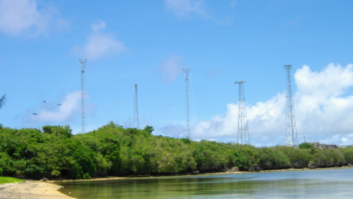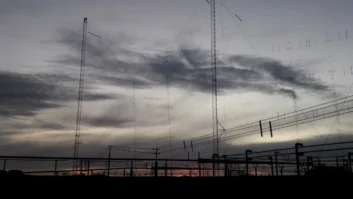
The Voice of America is shuttering its Robert E. Kamosa Transmitting Station in the Northern Mariana Islands.
The move was reported by local media in the U.S. Pacific territory based upon a letter from the United States Agency for Global Media.
“I suspect your organization has heard over the past week(s) about a big change taking place at the U.S. Agency for Global Media’s Robert E. Kamosa Transmitting Station or REKTS. The change is a discontinuation of all shortwave radio transmissions at our Saipan and Tinian sites, the first step in closing the station,” according to the letter.
REKTS consists of a transmitter and antenna system at Agingan Point at the southwestern point of Saipan and a second transmitter and antenna system on the western side of Tinian. The site is used for multi-language programming from Radio Free Asia and Voice of America into the East Asia region.
William Martin, director of the USAGM transmitting stations and operations division, stated: “By now many of you have heard that the “Voice of America” shortwave stations on Saipan and Tinian, which operated under the U.S. Agency for Global Media (USAGM), are closing. After decades of operation, these facilities are being phased out as shortwave audiences migrate to other media. Although these closures mark the end of an era, they are also bittersweet, as in closing these stations we also say farewell to the people and communities that supported our mission for so many years. On behalf of the agency, I would like to thank our staff and the many community members who contributed meaningfully to the stations’ operation these many years.”
Martin served as station manager for REKTS station manager from 2013 to 2019.
In recent years, USAGM has sought to redirect resources from shortwave broadcasting to other channels based upon where it can best reach its desired audiences. In its 2025 budget justification document, the agency noted a full review of short- and medium-wave broadcasting requirements “leading to some reductions in regions where Agency research shows that shortwave audiences have become vanishingly small.”
[Related: “Where VOA’s Broadcast Infrastructure Stands Today” (2022)]
An additional challenge for REKTS was lingering damage from Category 5 Super Typhoon Yutu, which destroyed the station’s infrastructure in October 2018.
According to USAGM’s FY2023 Agency Financial Report, the storm shredded the 16 shortwave curtain antennas at the site and downed one of its support towers. Using salvaged parts, five antennas fully restored by the end of FY 2020, and three more were back in operation by end of FY 2023 with parts for three additional antennas on site.
According the report, the total assets held by USAGM in the Northern Mariana Islands had an approximate book value of $5.4 million as of Sept. 30, 2023.
Previously, USAGM predicted it would have 11 of the 15 REKTS shortwave antennas fully operational by the end of FY2025. Additional capital improvements needed at the site included reroofing to prevent water leaks.
The site on Saipan first went on air in 1982 as Superrock KYOI, a commercial station targeting Japan with rock and pop music. It was acquired in 1986 by Herald Broadcasting Service. Radio Free Asia began leasing the transmitters in September 1996, purchasing the facility in 1999.
Construction of the Tinian site began in 1993 when the U.S. Department of Defense transferred 834 acres of land on the island to the U.S. Information Agency. The first transmissions from the site began in January 1999.





